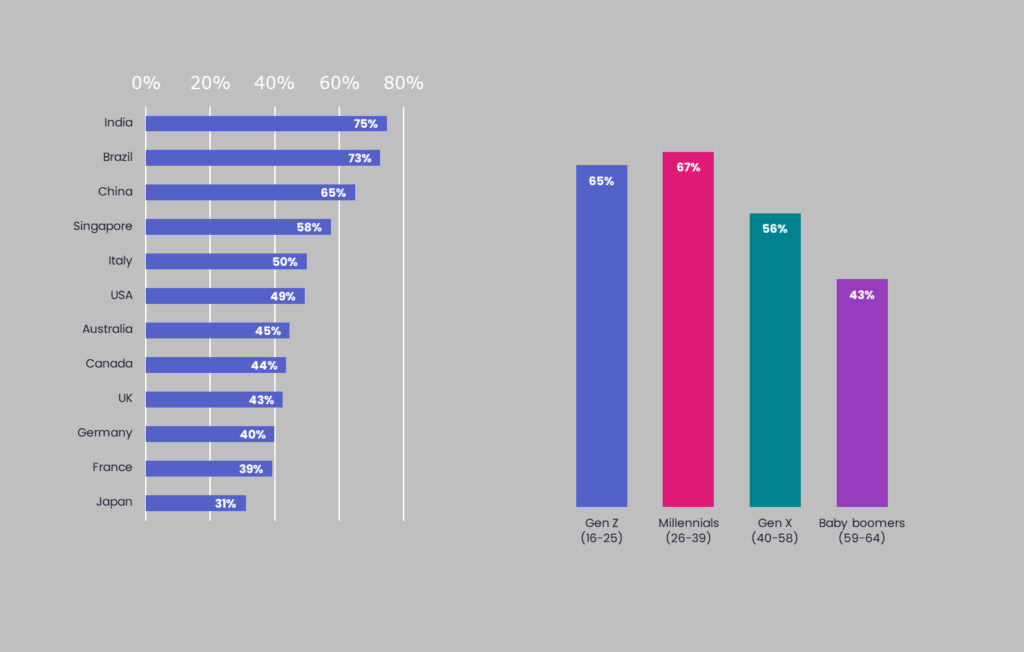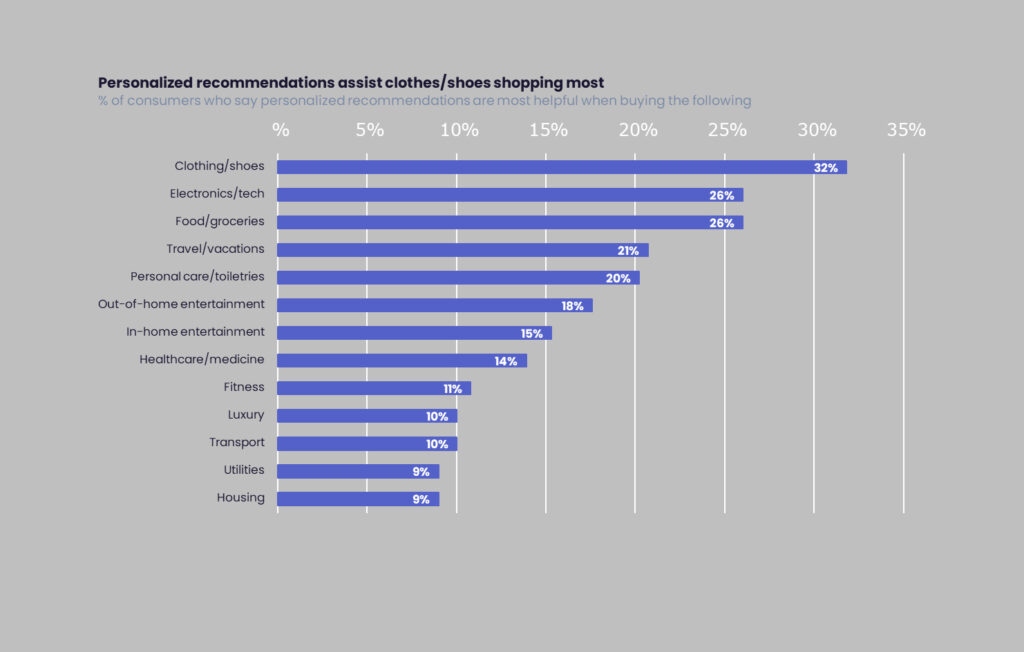In today’s highly competitive landscape, personalisation has become a critical factor in consumer purchase decisions. According to McKinsey’s “Next in personalisation” report, 72% of respondents say they expect the businesses they buy from to recognise them as individuals and know their interests. Two-thirds of GWI respondents feel an easy online process significantly impacts buying decisions, and tailored recommendations are the preferred personalisation approach. Personalisation is also a highly effective way to drive repeat business and loyalty, which is more important than ever in an overall low-loyalty environment.
That being said, the price of getting personalisation wrong is steep. Brands must communicate relevant products or services to the right consumer, or their brand reputation will be damaged. In a GWI survey, 39% of respondents agreed that seeing ads for products they would never purchase negatively influences their perception of a brand. A further 62% of consumers say a brand will lose their loyalty if they deliver an unpersonalised experience, which is up from 45% in 2021.
Too far in the other direction
Worse than getting it wrong is not personalising at all. I felt in equal parts amused and offended when a popular audiobook provider suggested the following titles: “Why mummy drinks,” “Never get angry again,” “Easy ways to quit emotional eating,” “The secret of half-arsed parenting,” and “I give my marriage a year.” The segmentation bucket I found myself in was overflowing with gender stereotypes. Needless to say, I have yet to become a customer and continue to source my audiobooks from the local library, which can offer me a broader list of options.
It is increasingly difficult for brands to attract consumers’ attention in highly competitive markets. Marketing efforts tend to be ignored by shoppers unless they find them relevant. Personalisation, which has been the gold standard for data-driven marketing for many years, addresses this problem by enabling brands to communicate directly with their target audience. It is about treating each customer as an individual rather than a faceless member of a broad target market and improving the overall customer experience — if done correctly.
As consumer expectations change and new technologies emerge, personalisation is no longer a value-add but a business necessity.
Where personalisation can add disproportionate value
Opinions on personalisation vary globally and by age, and there are cultural nuances that brands need to be aware of if they operate internationally. It can be a delicate dance when trying to strike the right balance between personalisation and (too) personal. What might make a customer ‘feel special’ in Brazil could make more privacy-conscious Germans feel creeped out. For brands operating in Western markets, it’s essential to consider overcoming these attitudinal hurdles. Consumers with more concerns about online privacy are generally more averse to personalisation.

Source: Global Web Index April 2023 Personalization Report
To cultivate trust among skeptical users, brands should focus on activities that deliver an enhanced customer experience and satisfy ever-increasing customer expectations. There are specific sectors, for instance, where consumers feel personalisation adds value: fashion, technology, food and travel are top of mind.

Source: Global Web Index April 2023 Personalization Report

